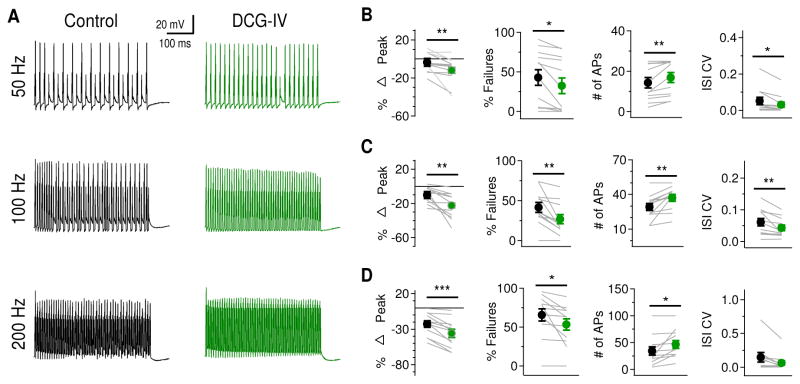Figure 6.
Activation of mGluR II enhances ability of LF NL neurons to follow high frequency inputs. A, Sample membrane potential recordings in response to current injections (2 ms pulse duration, 500 ms train duration) at 50 Hz (25 pulses), 100 Hz (50 pulses), and 200 Hz (100 pulses) before and after DCG-IV application. B, left: At 50 Hz, significant percent reduction in peak AP amplitude (first versus last AP) was observed after DCG-IV application (n = 12). Middle left: There was also a significant reduction in the percentage of failures after DCG-IV application. Middle right: The number of APs evoked by train stimulation was increased. Right: The coefficient of variation in inter-spike interval (ISI CV) was significantly reduced by DCG-IV. C, At 100 Hz, similar significant changes in peak AP amplitude, percentage of failures, number of APs, and ISI CV were observed. D, At 200 Hz, there was a significant reduction in peak AP amplitude, the percentage of failures, and the number of APs. The ISI CV remained unchanged (p = 0.057), possibly due to the relatively large variability in control conditions.

